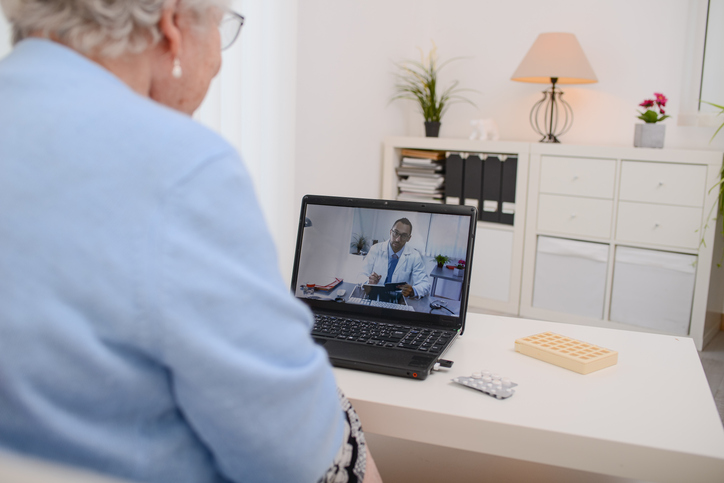Living with Chronic Pain
Tips for Telemedicine Appointments

As a result of the COVID-19 pandemic, many physicians are now using telemedicine appointments conducted via phone calls or video chats. Using this technology is new to many people, so they may wonder how to make the most of these virtual appointments. Here are some tips to use before, during, and after a telemedicine appointment.
Before the appointment
Know what to expect.
Ask the medical clinic or doctor’s office specific questions about the upcoming telemedicine appointment.
- Does a link need to be clicked or does an app need to be downloaded before the appointment?
- Is a username or password required?
- Who will initiate the call?
- Is there a virtual waiting room?
- Can the session be recorded?
Securing answers to these questions before the appointment saves time and eases stress.
Try the technology ahead of time.
Perform a trial run with the app or website well before the appointment time. Make sure that the camera, speakers, and microphone on the computer, tablet or cellphone are all in working order.
Choose an appropriate location.
Select a quiet, well-lit location with a strong internet connection. Check the location for items that may show up on screen that one may not want to be shown.
Have all necessary items available before the appointment.
Make sure the phone or video device is fully charged. It’s also helpful to have an extra charger handy in case the battery runs low during the appointment. Other items that may be helpful include the following:
- Earbuds with a built-in microphone
- A flashlight so the doctor can get a clear view of the back of the throat, a rash, or other areas that require extra light
- Any relevant medical devices, such as a thermometer, blood pressure cuff, or blood glucose monitor
- A list of all current medications and supplements
- Contact information for a pharmacy and any other current doctors
Write down any questions ahead of time. Preparing a list of questions helps ensure that nothing of significance is forgotten.
During the appointment
Be honest.
Let the physician know if someone else is in the room. It is often beneficial to have a trusted individual in the room to ask questions and help remember details about the appointment, but it is important to let the doctor know about the other person’s presence, especially if the doctor cannot see them on video.
Ask questions.
Ask questions and talk about any new or changing symptoms. Just as with an in-person appointment, make sure all concerns are mentioned and addressed.
After the appointment
Write down key takeaways.
After the appointment, write down the most important details from the conversation. Refer back to these notes as necessary.
Follow up with any physician requests.
Be sure to schedule any follow-up appointments or in-person visits for lab work, imaging tests, or physical exams.
Keep track of appointments, billing, and insurance payments.
Telemedicine appointments may require less of a paper trail, however, be sure to keep track of appointment and billing details in case they are needed in the future.
Implementing these tips can help make a telemedicine appointment a positive and successful experience.

















